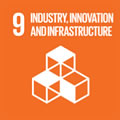Por favor, use este identificador para citar o enlazar a este item:
http://hdl.handle.net/10261/170058COMPARTIR / EXPORTAR:
 SHARE SHARE
 CORE
BASE CORE
BASE
|
|
| Visualizar otros formatos: MARC | Dublin Core | RDF | ORE | MODS | METS | DIDL | DATACITE | |

| Título: | A Global Comparison of Scientific Mobility and Collaboration According to National Scientific Capacities |
Autor: | Chinchilla-Rodríguez, Zaida CSIC ORCID ; Miao, Lili; Murray, Dakota; Robinson-García, Nicolás CSIC ORCID; Costas Comesaña, Rodrigo CSIC ORCID; Sugimoto, Cassidy R. | Palabras clave: | Scholarly communication Mobility International collaboration Scientific capacity Science policy Research and development |
Fecha de publicación: | 2018 | Editor: | Frontiers Media | Citación: | Frontiers in Research Metrics and Analytics 3: 1-14 (2018) | Resumen: | This study compares the flows of mobile researchers and the number of publications in international collaboration within the context of scientific and economic capacities. The goal is to identify the convergence or discrepancy of countries in mobility and collaboration and determine the positions and relative influence of countries in both processes. Using affiliation data from scientific publications, we analyze the distributions and networks of collaboration and mobility and their structural differences. The results show that there is a significant relationship between the flow of mobile researchers and the capacity for publishing with foreign partners in the more prolific countries, although mobility is always lower than collaboration. Size matters and scientific relationship are highly resource-dependent. Advanced and Proficient countries accumulate the highest proportion of the mobile authors and international publications with an extremely low representation of mobility in Developing and Lagging countries. In addition, the placement of countries is not always consistent in both networks, revealing distinct roles of mobility and collaboration, with particular instability for lower income countries. The more resources available in a country (both scientific and economic) the greater the likelihood of attracting foreign partners and mobilizing human capital. The policy relevance of these structural differences are described and a brief description of the limitations and future research are provided. | Versión del editor: | https://www.frontiersin.org/articles/10.3389/frma.2018.00017/full | URI: | http://hdl.handle.net/10261/170058 | DOI: | 10.3389/frma.2018.00017 | E-ISSN: | 2504-0537 |
| Aparece en las colecciones: | (CCHS-IPP) Artículos |
Ficheros en este ítem:
| Fichero | Descripción | Tamaño | Formato | |
|---|---|---|---|---|
| 2018_comparison_mobility_collaboration_networks.pdf | 4,99 MB | Adobe PDF |  Visualizar/Abrir |
CORE Recommender
Page view(s)
541
checked on 18-abr-2024
Download(s)
223
checked on 18-abr-2024
Google ScholarTM
Check
Altmetric
Altmetric
NOTA: Los ítems de Digital.CSIC están protegidos por copyright, con todos los derechos reservados, a menos que se indique lo contrario.


